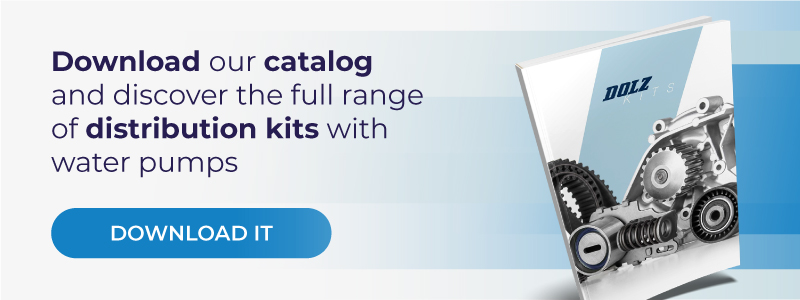Timing chains are the part of the engine in charge of connecting the crankshaft to the camshafts so that these two components smoothly function together. Even though timing chains are made of metal and are therefore stronger than timing belts, this does not mean that they should never be replaced. In fact, it is necessary to replace the timing chain at some point.
Read on to find out everything you need to know about your timing chain system and how to replace it.
When and why replace a vehicle’s timing chain?
Timing chains, with their slimmer width, are more durable than timing belts, so they don’t require scheduled maintenance. While it is true that, over time, the timing chain can elongate, the chain tensioner may fail, or there may be other factors that lead to poor lubrication and deterioration of the timing chain.
Timing chain problems are associated usually arise with high mileages. However, on some occasions, these tend to stretch or break over time. If a vehicle is exhibiting poor engine performance, it is having trouble to start, it is suffering from overheating, it is experiencing noises or vibration, or it is displaying a check engine light, it is most probable that you have to replace the timing chain immediately.
Keep reading: Timing chain replacement: when it’s necessary?
Things you need to replace a timing chain
Timing chain installation requires the right tools, a service manual specific to the engine’s model and a degree of mechanical know-how. Because it is a major job, the risk of performing it incorrectly could trigger irreversible consequences for the engine.
Timing chain kits are the safest way to ensure best timing chain installation practices. By replacing together all intrinsic components, timing chain replacement costs are significantly reduced while results are highly enhanced.
Installing a Timing Chain kit step by step
Step 1: Consult the owner’s manual
- First of all, locate the timing chain of the vehicle and verify the engine model, making sure that the timing system houses a timing chain rather than a timing belt.
- Rely on the owner’s manual to locate and identify the different engine parts and numbers, such as the firing order.
Step 2: Prepare the engine
- Make sure that the engine has cooled down and that it is no longer plugged in the batteries.
- If necessary, clean the engine with the use of the right degreaser and make sure that the workplace is adequate and that it offers safe conditions.
- Drain the vehicle’s oil and coolant and remove coolant hoses and other components that restrict access to the chain cover.
Step 3: Remove the timing chain cover
- Remove the timing chain cover by unbolting it from the engine block. When doing this, don’t neglect the bolts, they may each be different lengths, so you will need to know which bolt goes where on the cover.
- Remove the crankshaft pulley, loosen the camshaft sprocket, and then remove the chain tensioner. This will expose the guides, sprockets, and chain for a better access.
Step 4: Remove the timing chain
- Get the engine to top dead center and use a ratchet or wrench to remove the timing chain by sliding it off the gears.
- To do this, align the shiny links on the timing chain with the marks on the camshaft and crankshaft gears.
Step 5: Install the new timing chain
- Before installing the new chain, first of all install the guides and lubricate the gear by using a decent amount of gear oil. This will ensure that the timing chain system will perform smoothly in the future.
- Then place the new chain onto the gears while aligning it exactly with the marks previously referenced. Finish by tightening the chain according to the vehicle’s manual specifications. To do this you must have adjusted the cam sprocket.
You may like: Car Timing Chain System – Frequently Asked Questions (FAQ)
Step 6: Replace the oil seal
- This is the rubber seal around the crankshaft. Coat the seal with oil to ensure that it is compressed. This way you will make sure that it functions correctly.
- Proceed to reinstall the cover of the timing chain.
Step 7: Reassemble all components
- Start off by bolting on the harmonic balancer, then proceed to reinstall the rest of the engine components in the reverse order of removal.
- Once reassembled, make sure that the coolant is in perfect conditions before filling the radiator in.
Always refer to the owner’s manual for specifications.
Step 8: Review that everything is working properly
- Reconnect the car battery, start the engine and check that there is no leaking or dripping, and that the warning lights are all off.
Dolz kits: the most complete kits on the market
Industrias Dolz has developed a new range of timing chain kits that take timing chain replacement to a whole new level, being the most complete kits on the market incorporating: timing chain, crank sprocket, cam sprocket, tensioner, guides, oil seal, VVT, etc.
As a worldwide aftermarket supplier, Dolz only offers kits that meet all OE quality standards, including every component required for a professional and top tier repair.
Contact us to know more!


